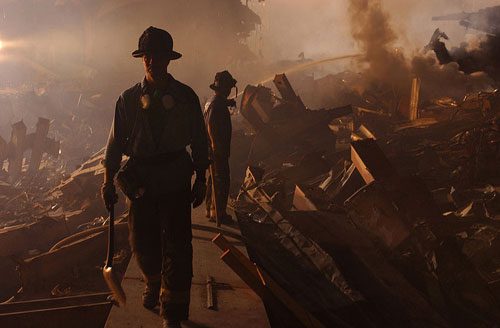
Over the past year, there has been a two-fold increase in the number of 9/11 responders who have been diagnosed with cancer. The total number of World Trade Center (WTC) responders diagnosed with cancer in the years since the 9/11 World Trade Center Attacks now exceeds 2,500, according to WPIX. Some responders say they are […]
 Over the past year, there has been a two-fold increase in the number of 9/11 responders who have been diagnosed with cancer.
Over the past year, there has been a two-fold increase in the number of 9/11 responders who have been diagnosed with cancer.
The total number of World Trade Center (WTC) responders diagnosed with cancer in the years since the 9/11 World Trade Center Attacks now exceeds 2,500, according to WPIX. Some responders say they are worried that their coverage might not come in their lifetimes; some are concerned that, as more is discovered about the illnesses being seen that are associated with the toxic dust cloud that hovered over Manhattan’s terrorist attack site, the numbers will continue to rise.
The World Trade Center Health Program indicates that 1,655 responders have been diagnosed with cancer, bringing the total number of responders reporting diagnoses to 2,518. Responders are defined as those individuals who were police officers, firefighters, emergency medical technicians (EMTs), construction workers, sanitation workers, and volunteers who responded to the WTC terrorist attack site, according to The New York Post. Also, although 1,145 claims have been received that involve a cancer diagnoses, just 115 claims have been awarded, to date.
Meanwhile, the September 11th Victims Compensation Fund (VCF) just announced a critical deadline that indicated that those individuals who have been diagnosed with a covered cancer on or before October 12, 2012 must file a Registration Form by October 12, 2014. The VCF also noted that first responders and others who were allegedly injured by the WTC toxic dust cloud, and who were diagnosed with cancer after October 12, 2012, must file a Registration Form within two years of the date of diagnosis.
The Zadroga Act, which became law in December 2010, was named for now-deceased New York Police Department detective James Zadroga. Detective Zadroga worked at Ground Zero.
Many individuals who participated in the rescue and recovery efforts following the 9/11 terrorist attacks have been diagnosed with various illnesses due to their exposure to toxic dust, according to The Lancet. The Zadroga Act reopened the 9/11 Victims Compensation Fund for five years so that payment for job and economic losses for first responders, those trapped in the buildings, and local residents who suffered illness or injuries related to the toxic dust may be provided.
Late last year, The New York Daily News reported that a study from the Mount Sinai Medical Center revealed a 15 percent increase in cancer rates in first responders when compared to people not exposed to the toxins at Ground Zero. At that time, approximately 1,140 responders and people who worked, lived, or went to school in lower Manhattan were certified as having been diagnosed with a WTC-related cancer by the National Institute for Occupational Safety and Health (NIOSH).
In fact, at that time, a New York Police Department (NYPD) report indicated that New York police officer cancer rates had risen five-fold in the 10 years since the attack on the World Trade Center’s twin towers. There had also been a ten-fold increase in thyroid cancer diagnoses and non-Hodgkin’s lymphoma cases, which was what The New York Daily News described as an increase factor of 3 ½.


